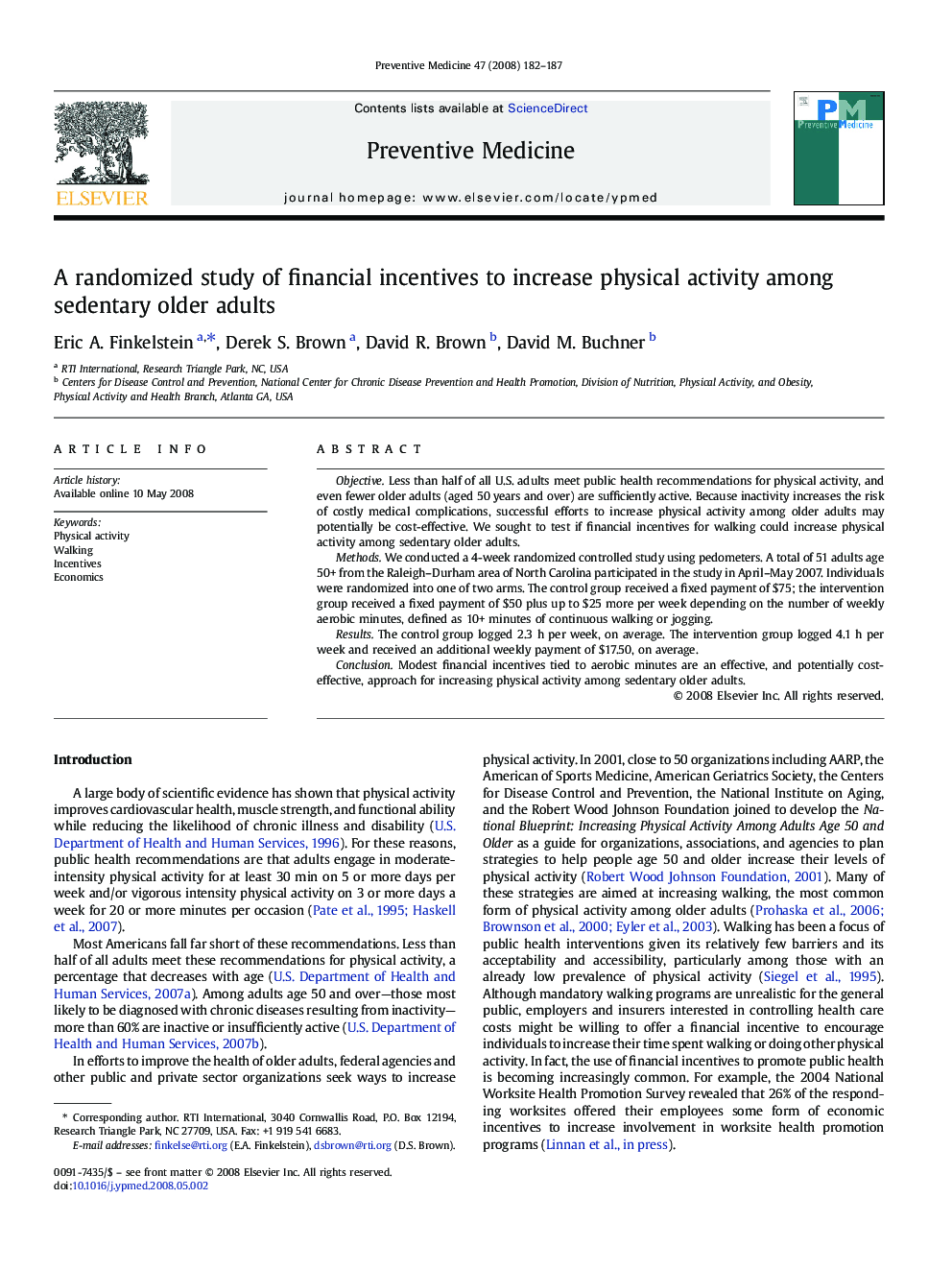| Article ID | Journal | Published Year | Pages | File Type |
|---|---|---|---|---|
| 3101534 | Preventive Medicine | 2008 | 6 Pages |
ObjectiveLess than half of all U.S. adults meet public health recommendations for physical activity, and even fewer older adults (aged 50 years and over) are sufficiently active. Because inactivity increases the risk of costly medical complications, successful efforts to increase physical activity among older adults may potentially be cost-effective. We sought to test if financial incentives for walking could increase physical activity among sedentary older adults.MethodsWe conducted a 4-week randomized controlled study using pedometers. A total of 51 adults age 50+ from the Raleigh–Durham area of North Carolina participated in the study in April–May 2007. Individuals were randomized into one of two arms. The control group received a fixed payment of $75; the intervention group received a fixed payment of $50 plus up to $25 more per week depending on the number of weekly aerobic minutes, defined as 10+ minutes of continuous walking or jogging.ResultsThe control group logged 2.3 h per week, on average. The intervention group logged 4.1 h per week and received an additional weekly payment of $17.50, on average.ConclusionModest financial incentives tied to aerobic minutes are an effective, and potentially cost-effective, approach for increasing physical activity among sedentary older adults.
